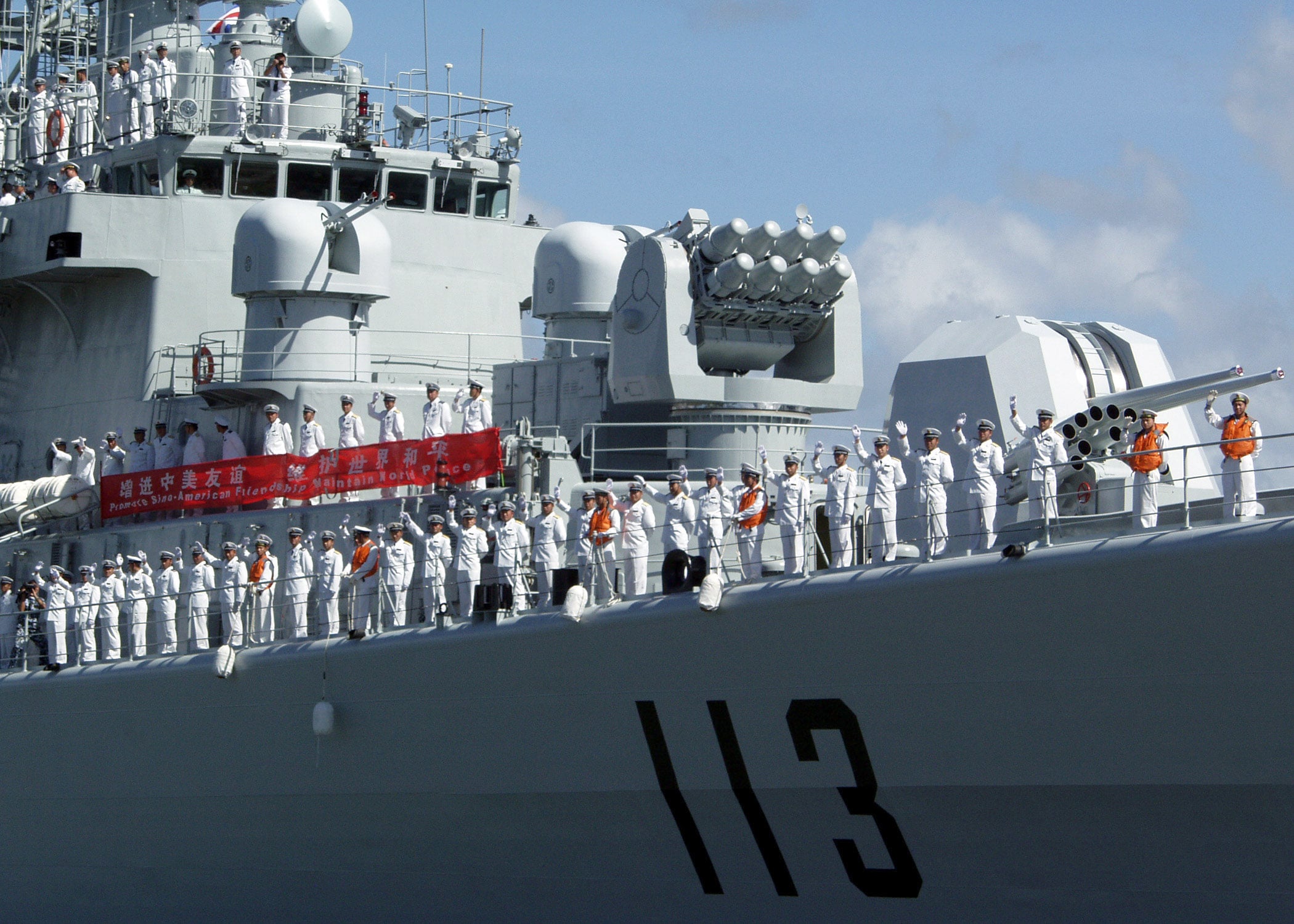Panmunjom, the “peace village” on the incredibly tense demilitarized zone (aka DMZ) between North and South Korea, is one of the weirdest places I’ve ever visited. Tough North Korean soldiers lurk about, watched by equally tough South Korean troops in one-way sunglasses and an aggressive judo ‘warrior’ stance.
When I was filming at Panmunjom, we were warned to beware of North Koreans who could at any moment rush into the main conference room and drag us into North Korea.
It was into this crazy house that the new, jet-lagged US Secretary of State Rex Tillerson was transported from turbulent Washington. After a quick look at the DMZ, Tillerson announced `no more Mr. Nice Guy.’ The US had run out of `strategic patience’ with North Korea and will go to war to end North Korea’s ‘threat’ to the US, he warned.
Tillerson, formerly CEO of EXXON, is well-versed in world affairs but the Korean peninsula’s complexities could be too much for him to quickly absorb. Immediately threatening war is no way to begin a diplomatic mission. But Tillerson was obviously reading from a script written by his boss, Donald Trump, whose knowledge of North Asian affairs makes Tillerson look like a Confucian scholar.
Welcome to Trump’s credo: tweet loudly and walk with a big stick.
What would war between the US and North Korea mean? A very grim scenario if it occurs.
The US has nearly 80,000 military personnel in South Korea and Japan, as well as more war-fighting units in Guam, which the US conquered from Spain in 1898. The US 7th Fleet patrols the region, armed with tactical nuclear weapons. US nukes are also based in South Korea and Guam. As we recently saw, US heavy B-1 and B-52 bombers can fly from North America to Korea.
South Korea has a formidable, 600,000-man army equipped with state of the art weapons. I’ve been up on the DMZ with the 2nd ROK division. As an old soldier, I was very impressed by their skill and warlike spirit.
North Korea’s one million-man armed force is large, but obsolescent. Its great strength in heavy artillery partly compensates for its totally obsolete, 1960’s vintage air force. Key combat elements of the DPRK army are dug deep into the rocky hills just north of the DMZ, with thousands of heavy North Korean guns facing south. In the event of war, the North claims it will destroy South Korea’s capitol, Seoul, that is only 30km away and has 20 million residents.
US estimates of war in Korea, made a decade ago, suggest America would incur 250,000 casualties in a war that would cost one million Korean deaths. That’s why the US has shied away from direct attack on North Korea. Unlike Iraqis, Syrians, Libyans and Somalis, North Koreans know how to fight back and are amply armed for a defensive war.
The US would certainly be tempted to use tactical nuclear weapons against North Korean troops and guns deeply dug into the mountainous terrain. Without them, air power, America’s usual trump card, would lose much of its destructive potential. No doubt, all North Korea would be ravaged by US air power, as it was during the 1950’s Korean War. South Korea plans massive air, missile and commando attacks on North Korean military HQ and against leader Kim Jung-un’s hideaway.
US war plans call for amphibious landings along North Korea’s long, vulnerable coastline. This threat forces the North to deploy large numbers of regular army and militia troops on both coasts.
North Korea’s air force and little navy would be vaporized on the first day of hostilities. But it is likely that the DPRK would be able to fire a score or more of medium-ranged missiles at Japan. If the war goes nuclear, Japan looks almost certain to suffer nuclear attack, along with Guam. Tokyo and Osaka are prime targets.
North Korean forces might be able to push south to Seoul, but likely no further in the face of fierce attacks by US and South Korean air power operating from bases further south. The North’s powerful commando force of some 100,000 troops would attack key South Korean targets, including its vital air bases shared with the US. Such raids would be highly disruptive but not decisive unless the DPRK used chemical and/or biological weapons to shut down South Korea’s air bases and its ports at Busan and Inchon.
The US and South Korea could certainly win such a war but it would be very bloody and expensive. There would be the threat of Chinese military intervention if it appeared the US was about to occupy North Korea. Russia is right next door.
Secretary Tillerson, please leave war threats to the generals and start practicing some active diplomacy with the North. If ever a war was not needed, it’s here.
Reprinted with permission from EricMargolis.com.


